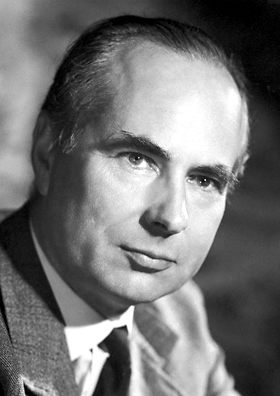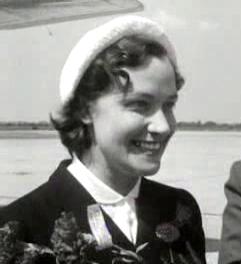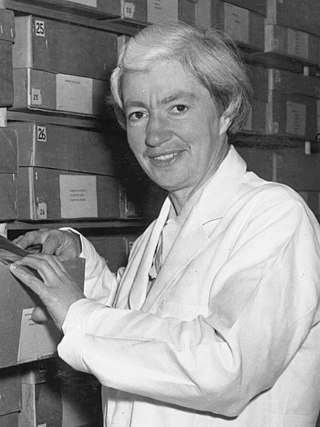Related Research Articles

Sir Andrew Fielding Huxley was an English physiologist and biophysicist. He was born into the prominent Huxley family. After leaving Westminster School in central London, he went to Trinity College, Cambridge, on a scholarship, after which he joined Alan Hodgkin to study nerve impulses. Their eventual discovery of the basis for propagation of nerve impulses earned them the Nobel Prize in Physiology or Medicine in 1963. They made their discovery from the giant axon of the Atlantic squid. Soon after the outbreak of the Second World War, Huxley was recruited by the British Anti-Aircraft Command and later transferred to the Admiralty. After the war he resumed research at the University of Cambridge, where he developed interference microscopy that would be suitable for studying muscle fibres.
The Linnean Society of London is a learned society dedicated to the study and dissemination of information concerning natural history, evolution, and taxonomy. It possesses several important biological specimen, manuscript and literature collections, and publishes academic journals and books on plant and animal biology. The society also awards a number of prestigious medals and prizes.

Kathleen Mary Ferrier, CBE was an English contralto singer who achieved an international reputation as a stage, concert and recording artist, with a repertoire extending from folksong and popular ballads to the classical works of Bach, Brahms, Mahler and Elgar. Her death from cancer, at the height of her fame, was a shock to the musical world and particularly to the general public, which was kept in ignorance of the nature of her illness until after her death.

Elizabeth Helen Blackburn, is an Australian-American Nobel laureate who is the former president of the Salk Institute for Biological Studies. In 1984, Blackburn co-discovered telomerase, the enzyme that replenishes the telomere, with Carol W. Greider. For this work, she was awarded the 2009 Nobel Prize in Physiology or Medicine, sharing it with Carol W. Greider and Jack W. Szostak, becoming the first Australian woman Nobel laureate.
Sir Frank Crisp, 1st Baronet, was an English lawyer and microscopist. Crisp was an enthusiastic member, and sometime officer, of the Royal Microscopical Society. He was generous in his support of the Society, donating furniture, books and instruments in addition to his work on technical publications.

The Royal Medal, also known as The Queen's Medal and The King's Medal, is a silver-gilt medal, of which three are awarded each year by the Royal Society, two for "the most important contributions to the advancement of natural knowledge" and one for "distinguished contributions in the applied sciences", done within the Commonwealth of Nations.

Carl Frederick Abel Pantin FRS was a British zoologist. He was educated at Tonbridge School and Christ's College, Cambridge.
The Sackler Prize is named for the Sackler family and can indicate any of the following three awards established by Raymond Sackler and his wife Beverly Sackler currently bestowed by the Tel Aviv University. The Sackler family is known for its role in the opioid epidemic in the United States, has been the subject of numerous lawsuits and critical media coverage, and been dubbed the "most evil family in America", and "the worst drug dealers in history". The family has engaged in extensive efforts to promote the Sackler name, that has been characterized as reputation laundering. In 2023 the Sackler family's name was removed from the name of the Tel Aviv University Faculty of Medicine.

Richard Henderson is a British molecular biologist and biophysicist and pioneer in the field of electron microscopy of biological molecules. Henderson shared the Nobel Prize in Chemistry in 2017 with Jacques Dubochet and Joachim Frank."Thanks to his work, we can look at individual atoms of living nature, thanks to cryo-electron microscopes we can see details without destroying samples, and for this he won the Nobel Prize in Chemistry."

The Royal Microscopical Society (RMS) is a learned society for the promotion of microscopy. It was founded in 1839 as the Microscopical Society of London making it the oldest organisation of its kind in the world. In 1866, the society gained its royal charter and took its current name. Founded as a society of amateurs, its membership consists of individuals of all skill levels in numerous related fields from throughout the world. Every year since 1841, the society has published its own scientific journal, the Journal of Microscopy, which contains peer-reviewed papers and book reviews. The society is a registered charity that is dedicated to advancing science, developing careers and supporting wider understanding of science and microscopy through its Outreach activities.

Irene Manton, FRS FLS was a British botanist who was Professor of Botany at the University of Leeds. She was noted for study of ferns and algae.

Dame Athene Margaret Donald is a British physicist. She is Professor Emerita of Experimental Physics at the University of Cambridge, and Master of Churchill College, Cambridge.
The H. H. Bloomer Award is an award of the Linnean Society, established in 1963 from a legacy by the amateur naturalist Harry Howard Bloomer, which is awarded to "an amateur naturalist who has made an important contribution to biological knowledge." The recipients, alternatively a botanist and a zoologist, are presented with a silver medal and a donation from the Fund.

Stephen Blackmore CBE FRSE Royal Society of Biology FLS is a British botanist, who was educated at St. George's School, Hong Kong and the University of Reading where he completed his PhD in 1976 on the "Palynology and Systematics of the Cichorieae". He was elected a fellow of the Linnean Society of London in 1976. He then worked at the Royal Society of London’s Research Station on Aldabra Atoll in the Indian Ocean before being appointed Lecturer in Biology and Head of the National Herbarium and Botanic Garden at the University of Malawi. In 1980, he was appointed Head of Palynology at Natural History Museum in London and from 1990 to 1999 served there as Keeper of Botany. In 1985 he organized, together with Keith Ferguson, the Linnean Society symposium "Pollen and Spores: Form and Function" and in 1990, together with Susan Barnes, "Pollen and Spores: Patterns of Diversification". He was the 15th Regius Keeper of the Royal Botanic Garden Edinburgh from 1999 until 20 December 2013, and was appointed His Majesty's Botanist in Scotland in 2010.

Lucy Beatrice Moore was a New Zealand botanist and ecologist.

Kathleen Maisey Curtis, Lady Rigg was a New Zealand mycologist and was a founder of plant pathology in New Zealand.

Dame Pratibha Laxman Gai-Boyes is a British microscopist and Professor and Chair of Electron Microscopy and former Director at The York JEOL Nanocentre, Departments of Chemistry and Physics, University of York. She created the atomic-resolution environmental transmission electron microscope (ETEM) and is an outspoken advocate for women with careers in science.

Kathleen Bever Blackburn, (1892–1968) was a British botanist best remembered for the 1923 discovery that plant cells have sex chromosomes. Her principal contributions were in plant cytology and genetics. She was also a pioneer of pollen analysis. She taught botany at Armstrong College, Durham University from 1918 to 1957.
Silvia Pressel is a botanist and head of the LS Algae, Fungi and Plants Division of the Natural History Museum, London.
References
- 1 2 3 4 "Trail-Crisp Award". linnean.org.
- ↑ Gage A.T. and Stearn W.T. (1988) A Bicentenary History of the Linnean Society of London, Linnean Society of London, pp. 165-174
- ↑ "Doncaster, Leonard (DNCR896L)". A Cambridge Alumni Database. University of Cambridge.
- ↑ Linnean Society [@LinneanSociety] (March 14, 2018). "Kathleen Bever Blackburn (1892-1968), a botanist, received the Trail Award and Linnean Society Gold Medal in 1930 for outstanding contributions to biological microscopy. Attached is her letter of acceptance. #LinnSocFemaleFellow #celebratingourfellows" (Tweet) – via Twitter. - includes photograph of her letter of acceptance